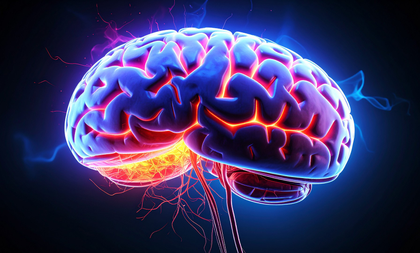Indian scientists explore potential cure for Alzheimer’s Disease using microRNAs
By IANS | Updated: August 6, 2025 17:59 IST2025-08-06T17:51:29+5:302025-08-06T17:59:56+5:30
New Delhi, Aug 6 MicroRNAs (miRNAs) -- the discovery of which received the Nobel Prize in Physiology or ...

Indian scientists explore potential cure for Alzheimer’s Disease using microRNAs
New Delhi, Aug 6 MicroRNAs (miRNAs) -- the discovery of which received the Nobel Prize in Physiology or Medicine last year -- may play a significant role in the treatment and cure of Alzheimer's Disease (AD), said researchers from Jawaharlal Nehru Centre for Advanced Scientific Research (JNCASR).
Alzheimer's Disease is a devastating condition that steals away mental faculties and debilitates day-to-day life of patients. Characterised by the accumulation of protein clumps in the brain, memory loss, and cognitive deficits, it is estimated to affect more than 57.4 million people worldwide, a number that is expected to almost triple to 152.8 million cases by 2050.
Addressing this, researchers from JNCASR, an autonomous institute of the Department of Science and Technology (DST), explored altered miRNAs in the Alzheimer's brain for early, specific, and accurate clinical diagnosis of the condition.
The study published in the journal NAR Molecular Medicine “unveiled various miRNA-mRNA pathway networks altered in Alzheimer's, which could potentially reveal various pathways to target for drug development,” said the team led by Madhu Ramesh and Prof. Thimmaiah Govindaraju from JNCASR.
In the study, the researchers used a double transgenic AD mouse model to discover novel miRNAs involved in AD development and progression and identified various miRNAs that are altered in the AD brain compared to the normal brain, which could potentially trigger the disease.
They discovered a significant increase in miR-7a -- which targets the protein Klf4 -- a master regulator of various gene expressions involved in Alzheimer's.
Their detailed study showed that the miR-7a-Klf4 axis regulates neuroinflammation -- a major cause of Alzheimer's pathology. This axis also regulates an iron-mediated neuronal cell death mechanism involved in Alzheimer's called ferroptosis.
“The study offers valuable insight into Alzheimer’s disease by uncovering the regulatory role of miR-7a in controlling neuroinflammation and ferroptosis via Klf4 targeting,” said Govindaraju.
The researchers also developed a miRNA-based therapeutic that targets Klf4 to prevent neuroinflammation and ferroptosis.
They carefully modified miR-7a to synthesise a mimic that significantly silenced Klf4 levels and rescued disease pathologies. They used Honokiol -- a small molecule and natural product for pharmacological modulation of the miR7a-Klf4 axis.
Honokiol is a natural product found in bark and seed cones of Magnolia tree that targets Klf4 to stall neuroinflammation and ferroptotic cell death involved in Alzheimer’s. This demonstrates that the miR-7a-Klf4 axis is a novel target for Alzheimer’s and warrants further exploration to develop better therapeutics for the disease, the team said.
“With clinical evaluation, the developed miRNA mimic and small molecule, if proven safe and effective, could potentially cure Alzheimer’s, benefiting both patients and caregivers,” they noted.
Disclaimer: This post has been auto-published from an agency feed without any modifications to the text and has not been reviewed by an editor
Open in app